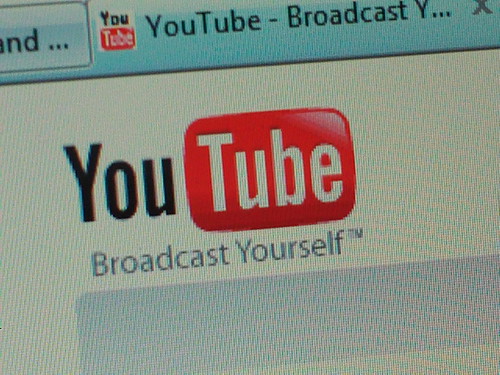Context Deficit Disorder

Labels: danah boyd, jeff jarvis, marcia stepanek, online privacy, social media, supernova 2010

Labels: danah boyd, jeff jarvis, marcia stepanek, online privacy, social media, supernova 2010

Labels: jack dorsey, Joe Rospars, marcia stepanek, national conference on volunteering and service, social activism, social enterprise, social innovation, social media, twitter

Labels: censorship, chris anderson, data privacy, julian assange, social activism, social media, TEDGlobal 2010, transparency, whistleblowers, wikileaks


Labels: data visualization, fernanda viegas, google suggest, marcia stepanek, martin wattenberg, personal democracy forum 2010, social action, social media, twitter, web seer
 At this past week's TEDGlobal 2010 conference in Oxford, the former diplomat and international relations professor Joseph Nye said that in modern-day diplomacy, "it is the story and the narrative that now wins (conflicts). Great powers have great stories." True enough, but fellow TED presenter Elif Shafak took it up a notch Wednesday, arguing that the power of the personal story trumps all. "The problem with today's cultural ghettos is not lack of knowledge," said Shafak, the best-selling female author in Turkey and the daughter of a diplomat and a philosopher. "We know a lot about each other, or so we think. But knowledge that doesn't take us beyond ourselves makes us distant and disconnected." Fiction, said Shafak, takes us into new territories. "Identity politics divides us, fiction connects," she said. "One is interested in sweeping generalizations; the other, in nuances. One draws boundaries; the other recognizes no frontiers. Identity politics is made of solid bricks; fiction is flowing water."
At this past week's TEDGlobal 2010 conference in Oxford, the former diplomat and international relations professor Joseph Nye said that in modern-day diplomacy, "it is the story and the narrative that now wins (conflicts). Great powers have great stories." True enough, but fellow TED presenter Elif Shafak took it up a notch Wednesday, arguing that the power of the personal story trumps all. "The problem with today's cultural ghettos is not lack of knowledge," said Shafak, the best-selling female author in Turkey and the daughter of a diplomat and a philosopher. "We know a lot about each other, or so we think. But knowledge that doesn't take us beyond ourselves makes us distant and disconnected." Fiction, said Shafak, takes us into new territories. "Identity politics divides us, fiction connects," she said. "One is interested in sweeping generalizations; the other, in nuances. One draws boundaries; the other recognizes no frontiers. Identity politics is made of solid bricks; fiction is flowing water."Labels: digital storytelling, Elif Shafak, social capital strategy, social media, TEDGlobal 2010

Labels: big love little hearts, Brooklyn Museum of Art, earth justice, foursquare, marcia stepanek, shelley bernstein, social activism, social media, social networking
 Sony today released the first full trailer for The Social Network, the much-anticipated movie about the creation of Facebook. Directed by David Fincher (Zodiac, The Curious Case of Benjamin Button) and written by Aaron Sorkin (The West Wing, Studio 60 on the Sunset Strip, Sports Night), the film tells the story of how Facebook co-founder Mark Zuckerberg helped to dream up the iconic social network at Harvard University way back in 2003. The tale includes the perspectives of other young entrepreneurs at the time who sued Zuckerberg, saying the site was their idea. [Hint: the tagline reads, "You don't get to 500 million friends without making a few enemies."]
Sony today released the first full trailer for The Social Network, the much-anticipated movie about the creation of Facebook. Directed by David Fincher (Zodiac, The Curious Case of Benjamin Button) and written by Aaron Sorkin (The West Wing, Studio 60 on the Sunset Strip, Sports Night), the film tells the story of how Facebook co-founder Mark Zuckerberg helped to dream up the iconic social network at Harvard University way back in 2003. The tale includes the perspectives of other young entrepreneurs at the time who sued Zuckerberg, saying the site was their idea. [Hint: the tagline reads, "You don't get to 500 million friends without making a few enemies."]Labels: life in a day, Mark zuckerberg, social media, social networks, The Social Network, YouTube

Labels: best practices, chris frith, marcia stepanek, neuroscience, nonprofit organizations, skoll world forum 2010, social activism, social entrepreneurs, social innovation

Labels: cause docs, crowdsourcing, kevin macdonald, life in a day, ridley scott, social media, Sundance film festival, YouTube

Labels: BP oil spill, digital swarms, politics, social media, social networks

Labels: 2010 games for change festival, cause activism, fate of the world, marcia stepanek, participatory chinatown, riverbed, social innovation, social media, video games